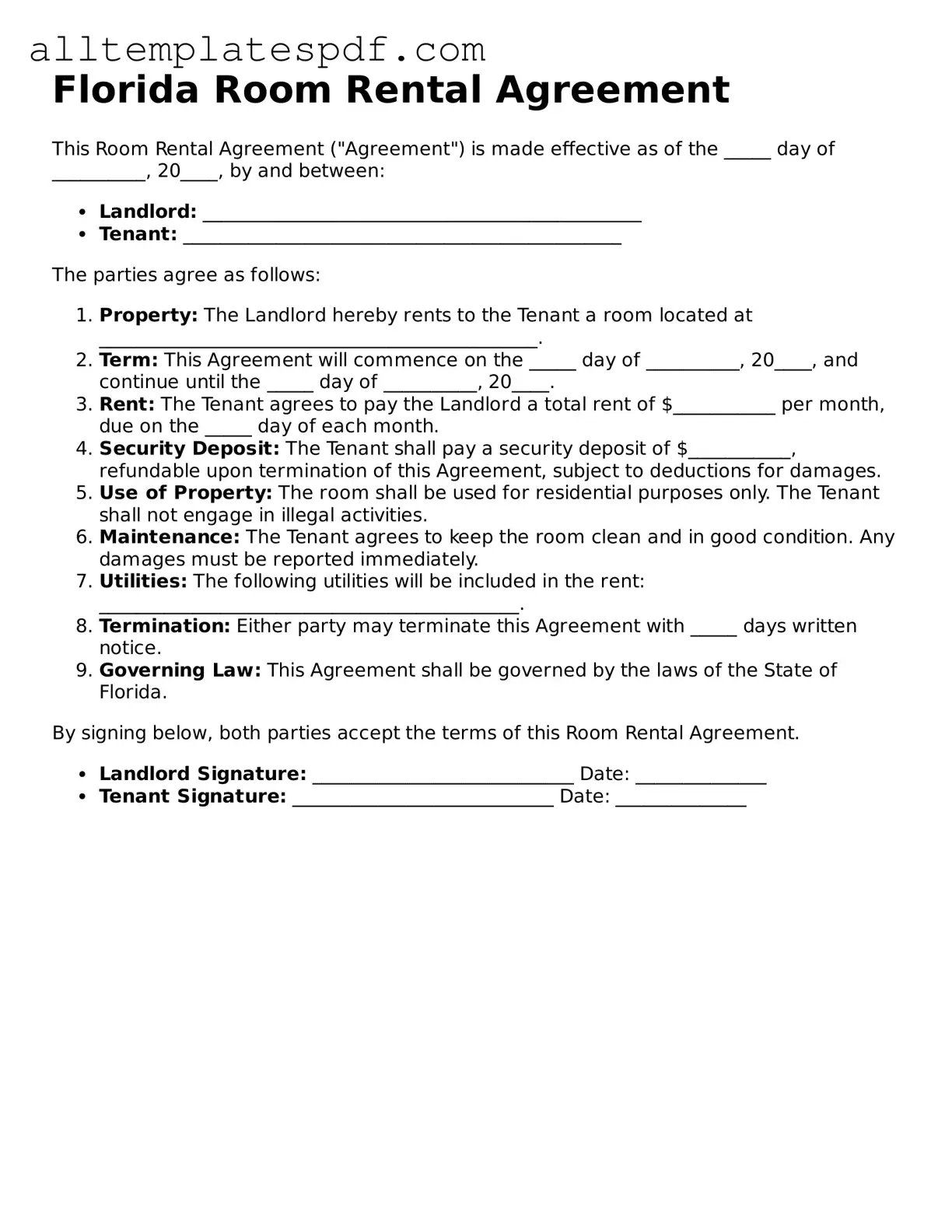Blank Room Rental Agreement Template for the State of Florida
The Florida Room Rental Agreement is a legal document that outlines the terms and conditions for renting a room in Florida. This agreement protects the rights of both the landlord and the tenant, ensuring clarity in the rental process. To begin your rental journey, consider filling out the form by clicking the button below.
Open Editor
